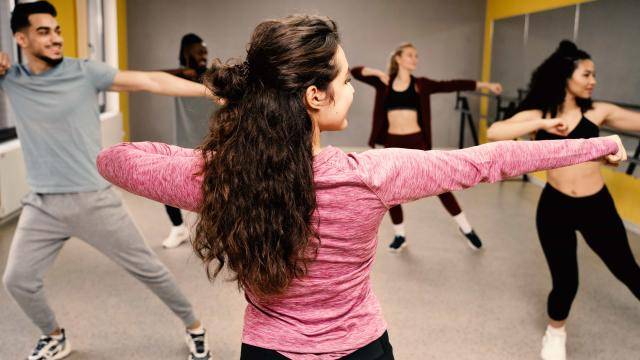Introduction:
In the realm of choreography, creativity serves as the driving force behind innovation and artistic expression. Nurturing and harnessing this creative spark is essential for choreographers seeking to bring their visions to life on the stage. In this insightful guide, we explore the intricacies of cultivating creativity in choreographic expression, offering practical tips and inspiration to ignite your imagination and elevate your dance compositions.
Unveiling the Vision: Choreographic Expression
Crafting a clear vision is the foundational step in the choreographic process, providing a roadmap for creative exploration and expression. A well-defined vision encapsulates the overarching concept, theme, and emotional resonance of the piece, guiding choreographers through the creative journey from conception to realization. By articulating their vision with clarity and conviction, choreographers lay the groundwork for transforming abstract ideas into tangible choreographic narratives.
Igniting Inspiration: Choreographic Expression
Inspiration acts as the catalyst that fuels the creative process, infusing choreographic compositions with depth, meaning, and emotional resonance. Drawing inspiration from diverse sources such as nature, literature, music, and personal experiences opens a gateway to endless creative possibilities. Whether it’s the evocative imagery of a sunset, the stirring melody of a symphony, or the raw emotion of a personal journey, inspiration sparks the imagination and breathes life into choreographic ideas.
Cultivating Creativity: Choreographic Expression
Creativity thrives in an environment of experimentation, exploration, and risk-taking. Cultivating creativity involves embracing curiosity, challenging conventions, and pushing the boundaries of artistic expression. From improvisational exercises to collaborative brainstorming sessions, there are myriad ways to nurture and expand creative potential. By fostering a culture of innovation and open-mindedness, choreographers empower themselves and their dancers to explore new realms of movement and expression.
Navigating the Creative Process: Choreographic Expression
The creative process is a dynamic journey characterized by ebbs and flows, breakthroughs and setbacks. Navigating this intricate landscape requires patience, resilience, and adaptability. From initial conceptualization to final refinement, each stage of the creative process presents its own unique challenges and opportunities. By embracing uncertainty, staying open to experimentation, and trusting in the creative intuition, choreographers navigate the twists and turns of the creative process with confidence and grace.
Crafting Choreographic Structure: Choreographic Expression
Structure provides the scaffolding upon which choreographic ideas are organized and articulated. Whether it’s the fluidity of contemporary movement or the precision of classical technique, crafting choreographic structure involves balancing freedom and form, innovation and tradition. By exploring spatial dynamics, rhythmic patterns, and thematic motifs, choreographers create cohesive and compelling narratives that resonate with audiences on an emotional and visceral level.
Embracing Movement Exploration: Choreographic Expression
Movement exploration is the heart and soul of choreography, allowing dancers to embody and express the essence of the choreographic vision. From exploring the nuances of gesture to harnessing the power of ensemble synchronization, movement exploration encompasses a wide spectrum of physical and emotional expression. By encouraging dancers to delve deep into their bodies, minds, and emotions, choreographers unlock new realms of creative possibility and artistic discovery.
Fostering Collaboration: Choreographic Expression
Collaboration lies at the core of choreographic innovation, fostering synergy, and collective creativity. From collaborating with composers and designers to working closely with dancers and choreographic assistants, the collaborative process enriches choreographic compositions with diverse perspectives and expertise. By cultivating an environment of trust, respect, and open communication, choreographers harness the collective genius of their collaborators to bring their vision to life with depth and authenticity.
Refining Artistic Expression: Choreographic Expression
Refinement is the final polish that elevates choreographic compositions from concepts to masterpieces. Through rigorous rehearsal, feedback, and reflection, choreographers refine their artistic expression, honing every nuance and detail to perfection. From fine-tuning choreographic phrasing to sculpting emotional dynamics, the refinement process is a labor of love that transforms raw creativity into sublime beauty, leaving a lasting impression on audiences and dancers alike.
Overcoming Challenges: Choreographic Expression
The path to realizing a choreographic vision is paved with challenges, obstacles, and moments of doubt. From creative blocks to logistical hurdles, overcoming challenges requires resilience, determination, and unwavering commitment to the artistic journey. By embracing challenges as opportunities for growth and learning, choreographers emerge stronger, more resilient, and more inspired than ever before, ready to conquer new artistic frontiers and push the boundaries of creative expression.
Celebrating Achievement: Choreographic Expression
Bringing a choreographic vision to life is a triumph worthy of celebration, a testament to the power of creativity, passion, and perseverance. Whether it’s the thunderous applause of a captivated audience or the quiet satisfaction of a job well done, every milestone along the journey is cause for celebration. By taking a moment to savor the fruits of their labor, choreographers recharge, rejuvenate, and prepare for the next exhilarating chapter in their artistic odyssey.
FAQs
How can I overcome creative blocks during the choreographic process? Creative blocks are a common challenge faced by choreographers. To overcome them, try taking a break and engaging in activities that inspire you, such as listening to music, exploring nature, or attending dance performances. Additionally, collaborating with other artists and seeking feedback from trusted peers can help reignite your creative spark.
What role does music play in choreography? Music plays a pivotal role in choreography, serving as a source of inspiration, rhythm, and emotional resonance. When selecting music for a choreographic piece, consider how its tempo, mood, and instrumentation complement and enhance the thematic elements of your choreography.
How can I effectively communicate my choreographic vision to dancers? Effective communication is essential for conveying your choreographic vision to dancers. Clearly articulate your ideas, demonstrate movements, and provide context and emotional cues to help dancers understand the intention behind the choreography. Encourage open dialogue, collaboration, and experimentation to foster a sense of ownership and investment in the creative process.
What are some tips for refining choreographic compositions? To refine choreographic compositions, focus on clarity, precision, and emotional authenticity. Pay attention to spatial dynamics, musicality, and thematic coherence, making adjustments as needed to enhance the overall impact of the piece. Seek feedback from dancers, mentors, and audiences to gain fresh insights and perspectives on your work.
How can I stay motivated during the choreographic process? Staying motivated during the choreographic process requires passion, perseverance, and a supportive community. Surround yourself with fellow artists who share your creative vision, set achievable goals, and celebrate small victories along the way. Remember to take breaks, recharge your creative energy, and stay connected to the joy of dancing and choreographing.
What are some strategies for overcoming performance anxiety? Performance anxiety is a common challenge faced by dancers and choreographers alike. To overcome it, practice relaxation techniques such as deep breathing and visualization, focus on the present moment, and cultivate a positive mindset. Remember that nerves are a natural response to performing and that each performance is an opportunity for growth and self-expression.
Conclusion: Choreographic Expression
The spark of innovation ignites the creative spirit, transforming choreographic ideas into transcendent works of art. By nurturing creativity, fostering collaboration, and embracing the challenges and triumphs of the artistic journey, choreographers unlock new realms of expression and leave an indelible mark on the world of dance.

